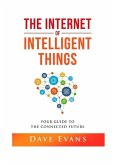Mobile data usage has witnessed significant growth over the last few years, driven by factors such as increased smartphone penetration, the proliferation of data-intensive applications, and the expansion of 4G and 5G networks. After the launch of 5G, average mobile data usage per smartphone is set to rise from 21 GB in 2023 to 56 GB in 2029. 5G's share of mobile data traffic is forecast to grow to 76 percent in 2029. Total mobile data traffic is estimated to grow by a factor of around 3 between 2023 and 2029. Below is the explanation with few examples 1. Surge in Smartphone Adoption - The widespread adoption of smartphones has been a key driver of increased mobile data usage. As more people transition from feature phones to smartphones, they gain access to a plethora of data-intensive applications and services. One of the key driving factors behind the surge in 5G smartphones sales has been increasing affordability of handsets. High growth is observed in rural areas. 2. Rich Media Content Consumption - The consumption of rich media content, such as high-definition videos and images, has surged. Platforms like YouTube, Netflix, and social media apps contribute significantly to this trend. For instance, streaming a high- definition video on platforms like YouTube can consume several hundred megabytes of data per hour. 3. Social Media and Messaging Apps - The popularity of social media platforms and messaging apps has soared. Users now regularly share multimedia content, engage in video calls, and upload high-resolution images. For example, sharing images and videos on platforms like Instagram and Snapchat can contribute to increased data usage.
Hinweis: Dieser Artikel kann nur an eine deutsche Lieferadresse ausgeliefert werden.
Hinweis: Dieser Artikel kann nur an eine deutsche Lieferadresse ausgeliefert werden.







![Cyber Infrastructure Protection [Enlarged Edition] Cyber Infrastructure Protection [Enlarged Edition]](https://bilder.buecher.de/produkte/66/66649/66649345m.jpg)
